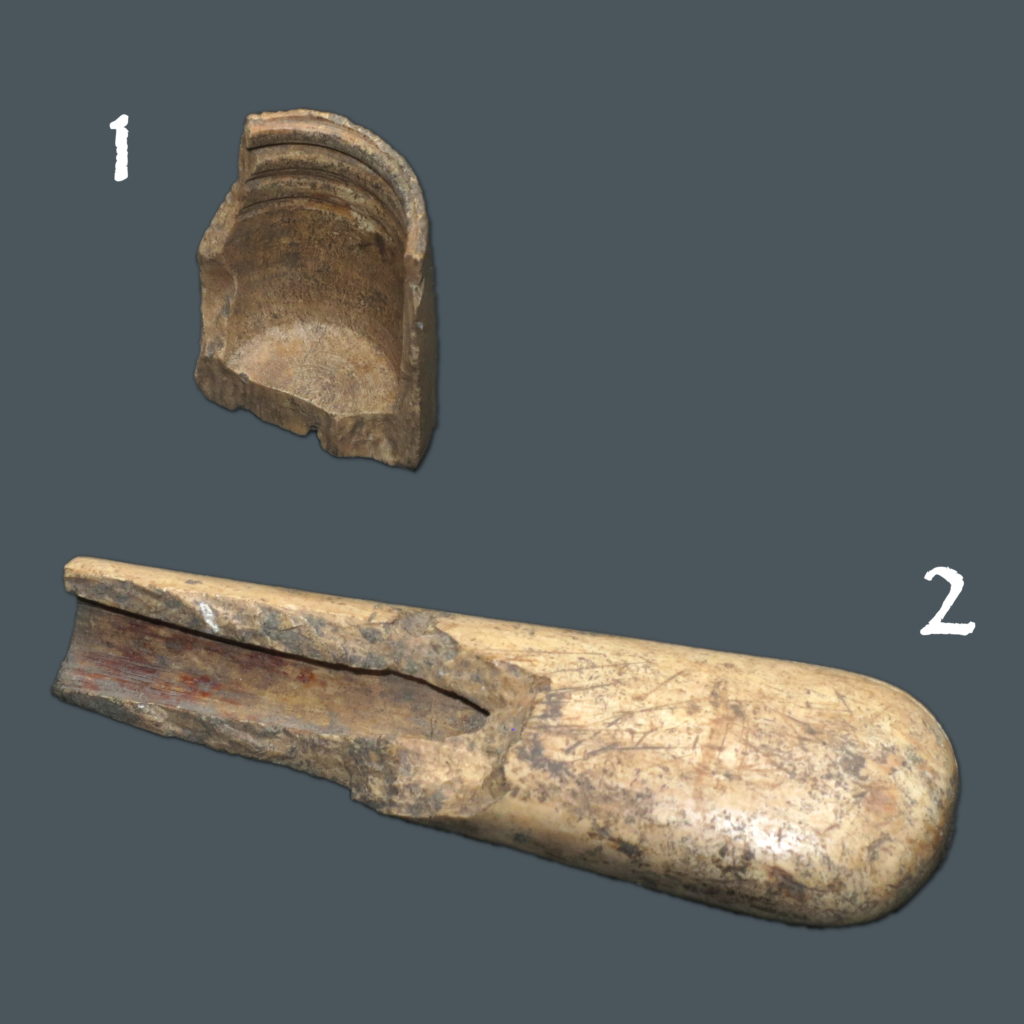Results are in for Small Bone Objects
“The cylindrical, lathe-turned object (1) with a central lathe mark on the outer flat terminal end was part of a container of some kind. Inside are the remains of three regularly spaced internal grooves, beneath which the rest of the object has broken off. The presence of an internal thread is suggestive of a screwing mechanism indicating that the object was either a lid or a base possibly of a needle case.
By the Post-Medieval period needle cases were cylindrical in shape but had sealed ends and were equipped with screw threads for the attachment of lids, unlike Medieval needle-cases which tended to be hollowed bone containers with needles stored in cloth rolls within. Three similarly turned bone cylindrical objects, including two examples with internal screw threads were recovered from Basing House, Hampshire from contexts dating to 1540-1645.
While the form of the possible needle case from Gloucester Cathedral is not closely datable in itself, a Post-Medieval, or perhaps a later date is suggested since there was an enormous increase in the output of sewing accessories in bone and ivory from the late 18th century onwards. This dating might accord with the tentative date for the bone handle, although neither object is chronologically diagnostic and the contexts they came from were very mixed grave contexts containing pottery and finds from the Roman to Post Medieval period.
The bone handle (2) is probably from a very small whittle tang knife. It has an oval-shaped section and a rounded end and has a polished surface, the style is suggestive of a knife of Post-Medieval date.”
We asked our Post-ex & Archiving Manager (Leominster), Emma Hardy MA to tell us more about this type of knife:
” A Whittle tang knife refers to the construction method used, the ‘tang’ is the pointed worked end which would be encased in the worked bone or wood handle. Such knives were very common throughout Medieval to Post Medieval times and would have had many uses as a personal eating knife, pen knife, personal protection etc. later on a Scale tang style of construction became popular for personal knives especially for wealthier people, these knives would have the tang sandwiched and riveted into a bone or wooden handle”

